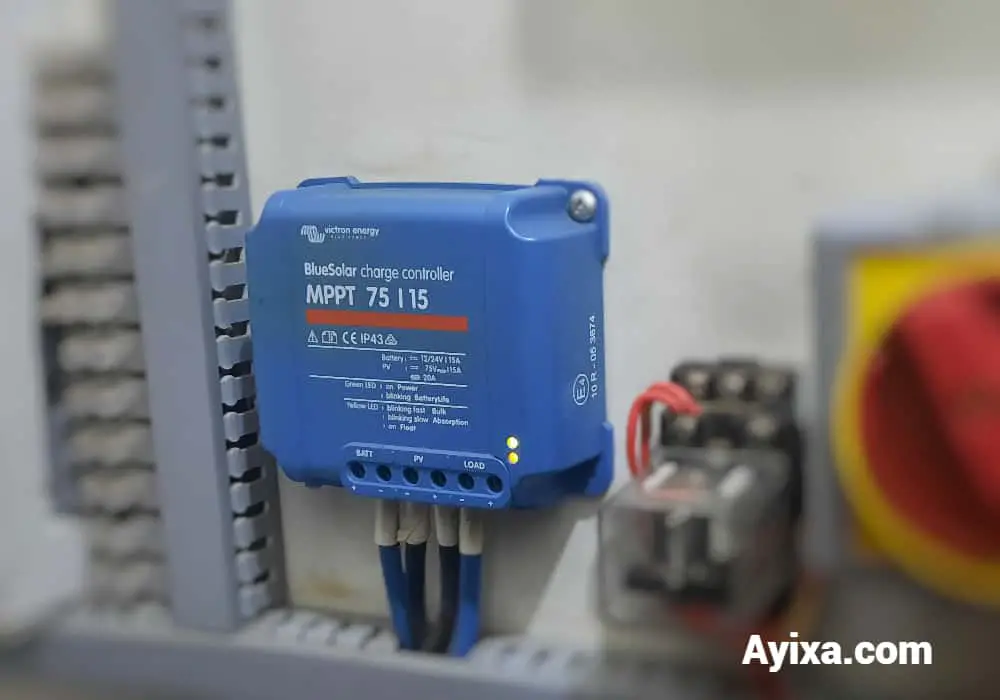if you’re new to the world of solar it may be clear to you how to tell if the charge controller in your system works or not and what checks you can conduct to confirm.
While it can be difficult to generalize and call out signs and tests to conduct as there’re various charge controllers des if you’re not sure whether the controller works or not.
Read on to find out how to tell if your charge controller is working and what may be the issue if it is not.
Signs a Solar Charge Controller is Working
Note, signs and tests may vary from one charge controller to another depending on the type and model of the charge controller. That said, here are some signs you can look out for.
Check for “charge status” on a charge controller display. The charge display status may be a LED status indicator, an LCD display with a charge status icon, or a display of the number of amps flowing to the battery.
Consult the owner manual for your particular model of charge controller for the visual indicator you should see if it is working well.
How to Test Whether a Charge Controller is working
With the charge controller properly installed and the solar panels receiving sunshine, the battery voltage should gradually rise as current flows from the panels to the battery.
You can confirm this by measuring the voltage of the battery using a multimeter connected to the battery terminals or the battery voltage display on the charge controller if it has one.
If the battery voltage increases to the set levels for the selected battery type (AGM, LiFePO4, GEL) then it’s working.
Signs a Solar Charge Controller is not Working
If the charge controller is not working properly, it usually displays an error condition (error message on the LCD display, sequence of flashing of LED lights) or there might not be a light at all.
Additionally, there will not be any current flow to the battery and the battery voltage will not increase.
Check that the charge controller is properly connected to the battery and solar panels as recommended by the manufacturer.
Reasons a Charge Controller may not be Working (including Mppt Controllers)
The several possible reasons why a charge controller may not be working:
#1. The charge controller may be locked up and require a reset. Depending on the charge controller this may be done by disconnecting the solar panel wires and batteries for a few minutes and then connecting the batteries first and the solar panel wires.
Check if the error message on the charge controller clears and if it resumes working.
#2. The batteries may be discharged. A solar charge controller relies on the battery voltage to power its internal electronics.
If the batteries are drained, then there’ll be no power to keep the charge controller working.
Connect the charge controller to a charged set of battery(s) and check if it resumes working.
#3. The charge controller fuse may be blown. The charge controller fuse can blow too in case the charge controller is connected to a higher battery voltage than it is designed for or if the positive and negative wire connections to the battery are interchanged and wrongly connected.
Check the polarity of the battery connections to the charge controller, and the battery bank voltage. Do not hesitate to contact a qualified solar technician too.
#4. The charge controller may be faulty too. Charge controllers do fail too. Sometimes this may be because they’re undersized, installed in an environment they are not built for (exposed to water, heat), they overheat, or through no fault of your own.
Try to find the reason why your charge controller may have failed before you replace it with another.
You may also be interested in this post: Do you need to use the load output terminals on your charge controller?
What Causes a Solar Charge Controller Display to Stop Working?
If the solar charge controller display is blank, as a first step check that the batteries are charged and there are no fuse blows as these can stop power to the charge controller.
Inspect the system wiring for any fault – Is there a wiring fault that may have led to this condition?
It is also possible that the charge controller has an internal fault too.
Closing Thoughts
Depending on the model of the charge controller used, you may be able to check the LED status or monitor the battery voltage using the inbuilt voltmeter or an external multimeter across the battery terminals to confirm if the charge controller is working on not.
If not working, check for faults in wiring, a blown fuse, discharged battery, or even a faulty charge controller to mention a few of the possible causes.
Hope this helps!

